42+ Sample Budget Checklists
-
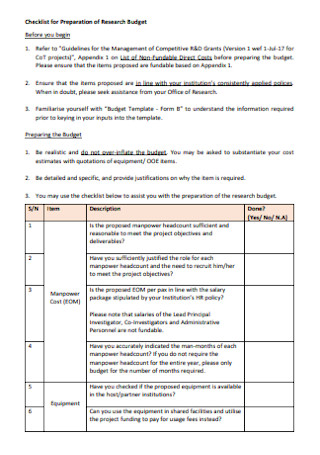
Checklist for Preparation of Research Budget
download now -
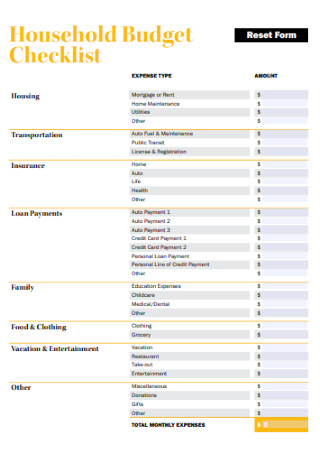
Household Budget Checklist Template
download now -
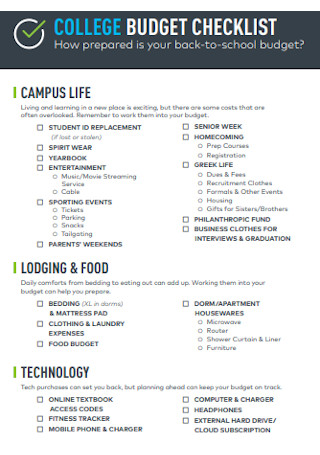
College Budget Checklist
download now -
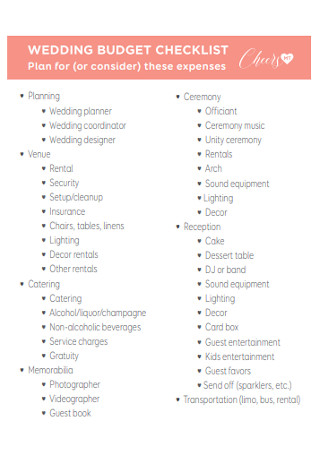
Simple Wedding Budget Checklist
download now -
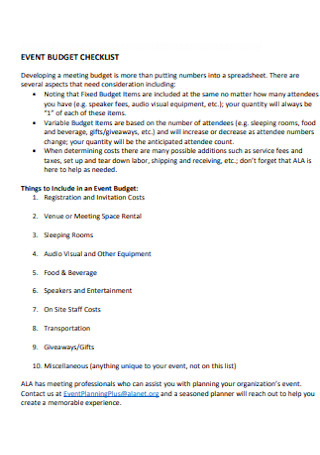
Event Budget Checklist
download now -
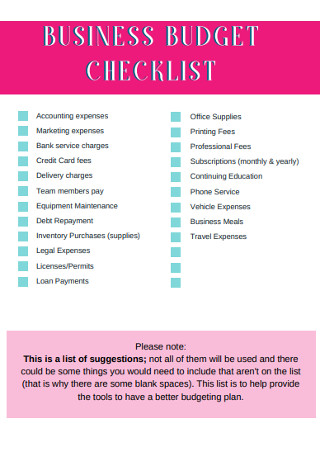
Business Budget Checklist
download now -
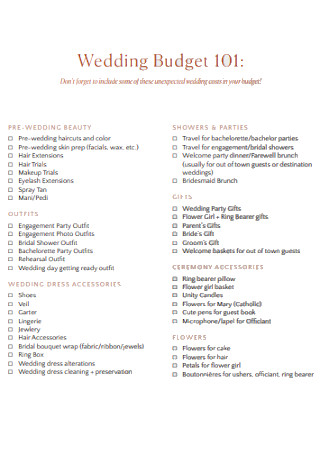
Sample Wedding Budget Checklist
download now -
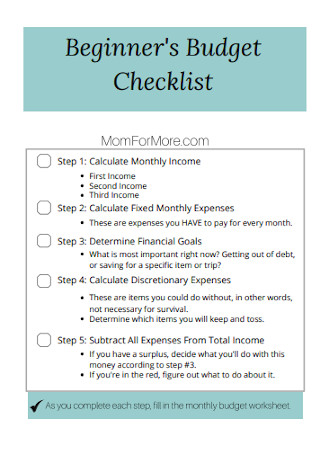
Beginners Budget Checklist
download now -
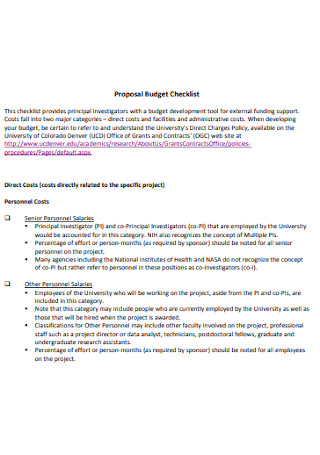
Proposal Budget Checklist
download now -
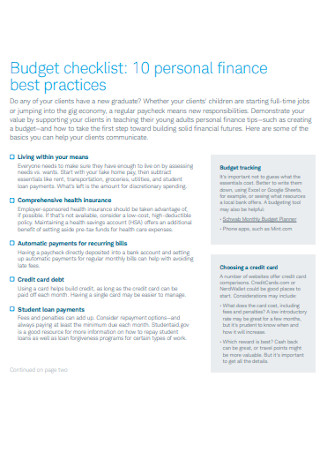
Personal Budget Budget Checklist
download now -
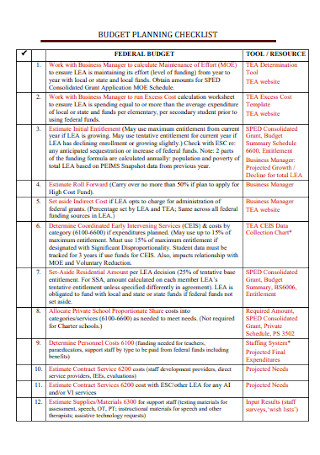
Budget Planning Checklist
download now -
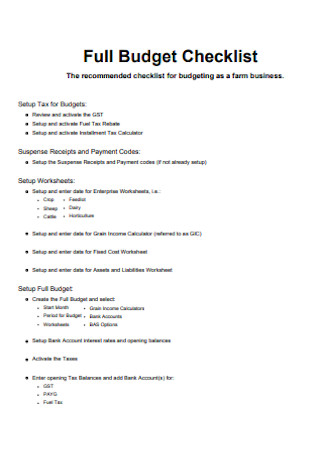
Full Budget Checklist
download now -
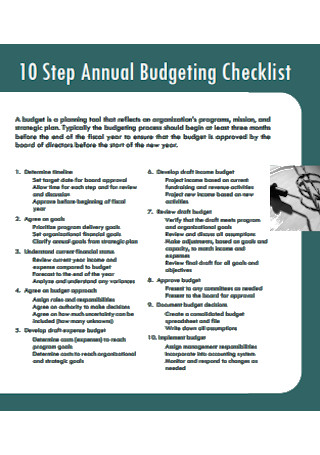
Annual Budgeting Checklist
download now -
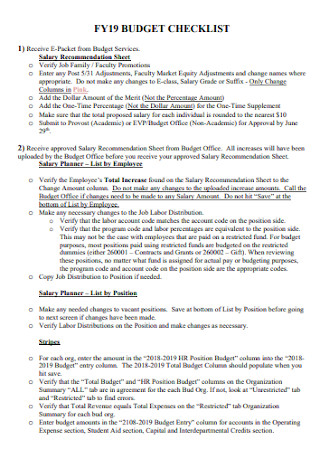
Simple Budget Checklist Template
download now -
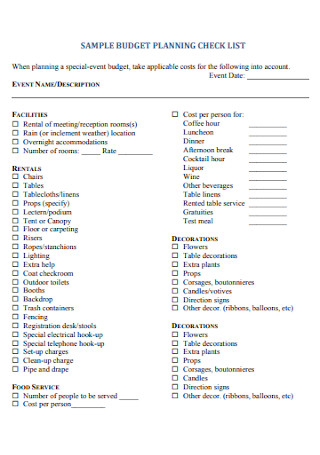
Sample Budget Planning Checklist
download now -
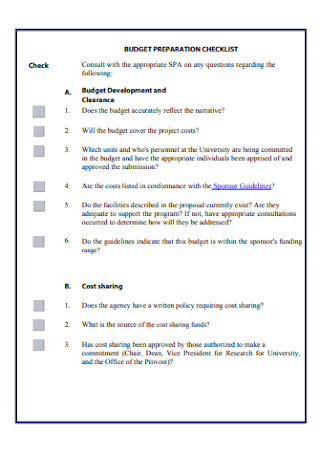
Budget Preparation Checklist Template
download now -
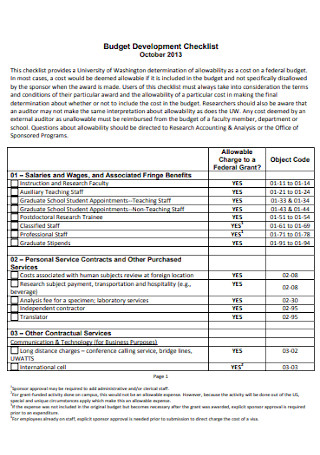
Budget Development Checklist
download now -
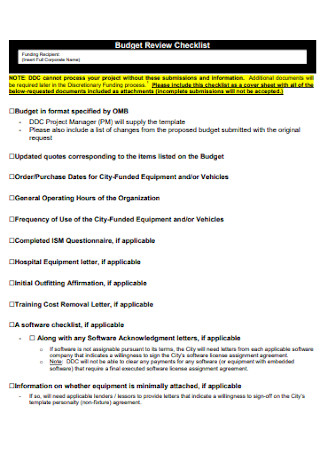
Budget Review Checklist
download now -
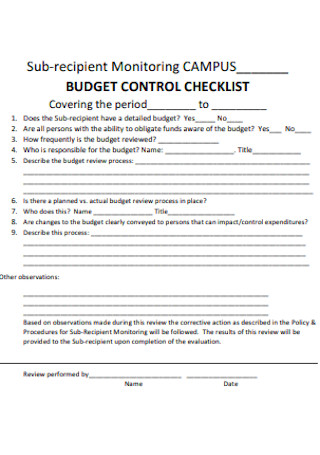
Budget Control Checklist
download now -
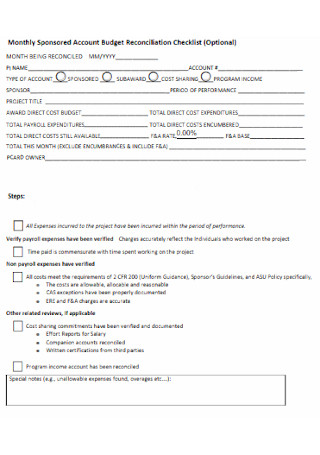
Account Budget Reconciliation Checklist
download now -
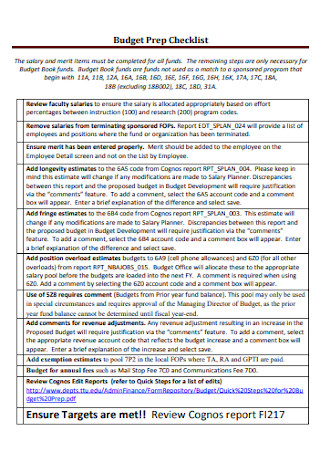
Budget Prep Checklist Template
download now -

Checklist for Examining Budgets
download now -
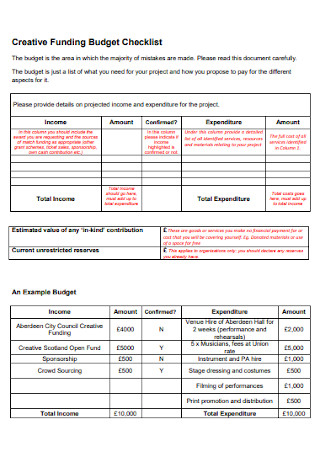
Creative Funding Budget Checklist
download now -
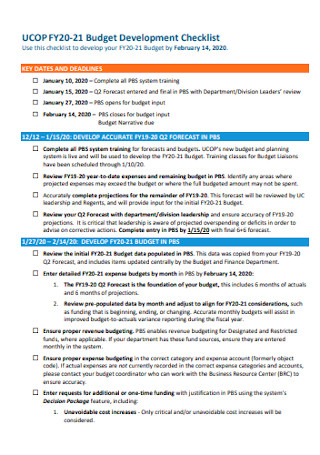
Budget Development Checklist Template
download now -
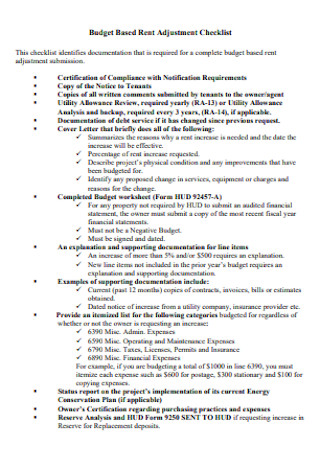
Budget Based Rent Adjustment Checklist
download now -
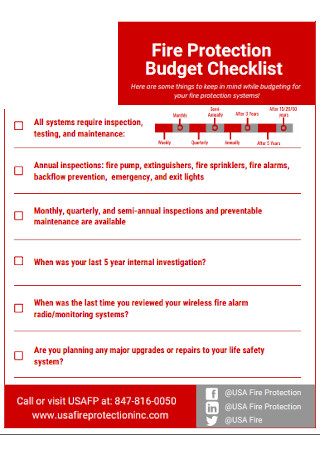
Fire Protection Budget Checklist
download now -
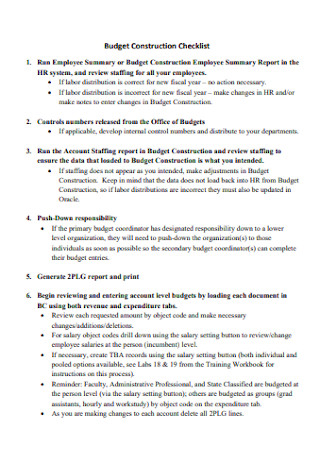
Budget Construction Checklist
download now -
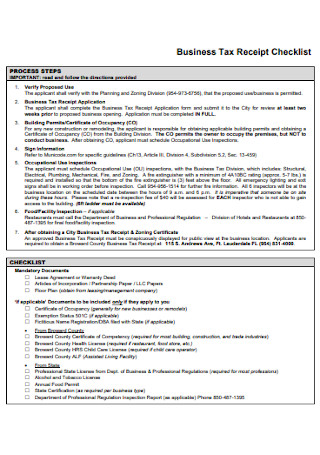
Business Budget Receipt and Checklist
download now -
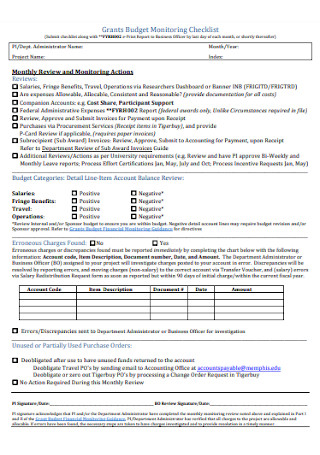
Grants Budget Monitoring Checklist
download now -
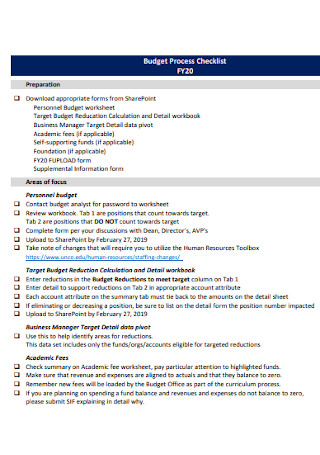
Budget Process Checklist
download now -
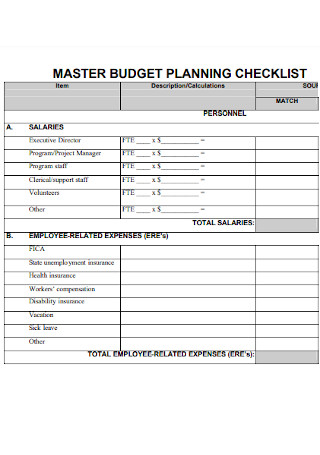
Master Budget Planning Checklist
download now -
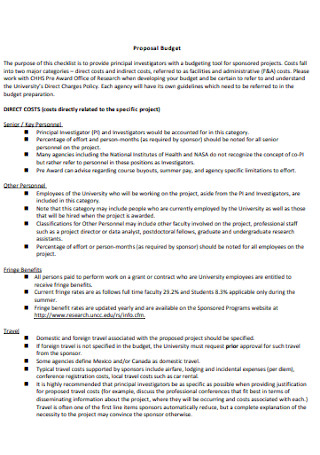
Checklist for Proposal Budget
download now -
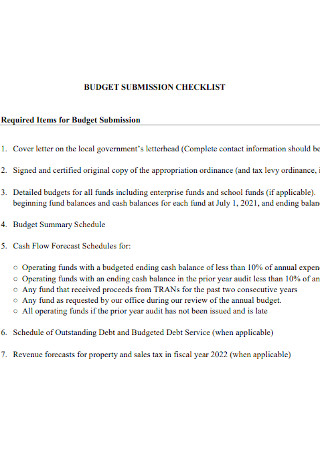
Budget Submissions Checklist
download now -

Program Budget Checklist Template
download now -
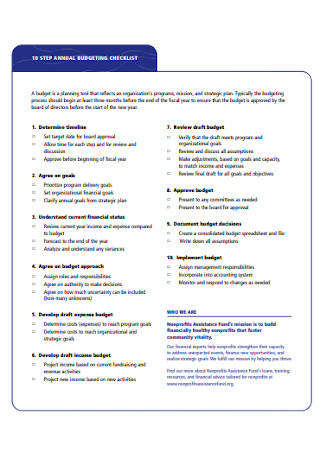
Sample Annual Budgeting Checklist
download now -
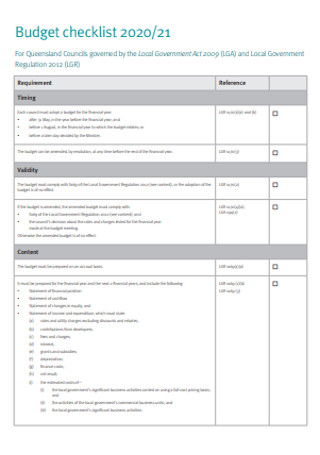
Budget checklist Format
download now -
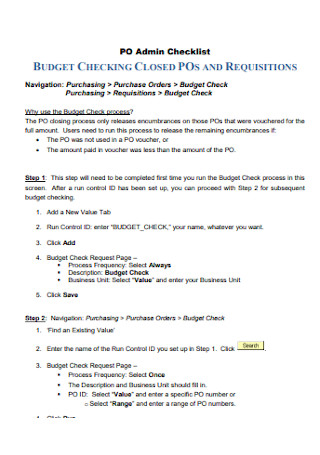
Budget Admin Checklist Template
download now -
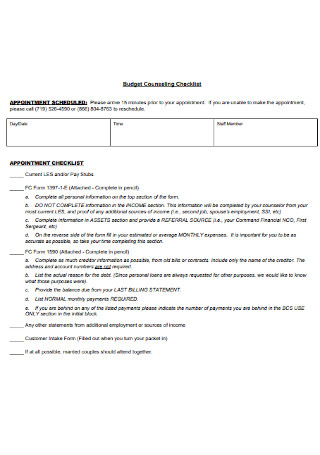
Budget Counseling Checklist
download now -
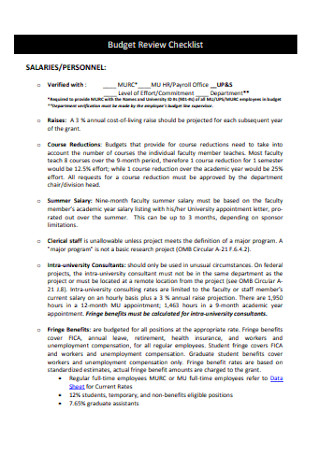
Budget Review Checklist Template
download now -
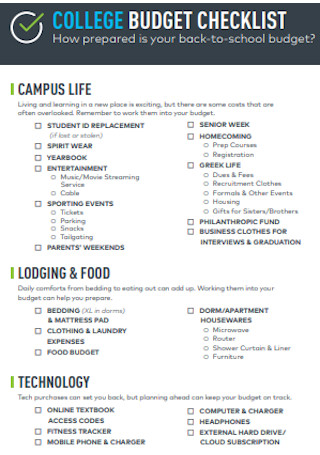
College Budget Checklist
download now -
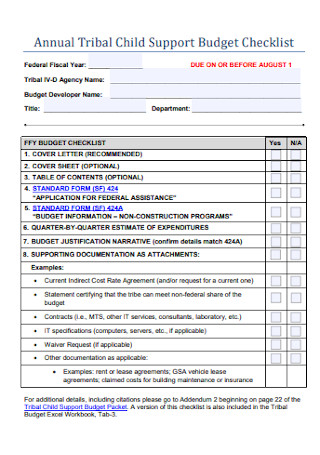
Child Support Budget Checklist
download now -
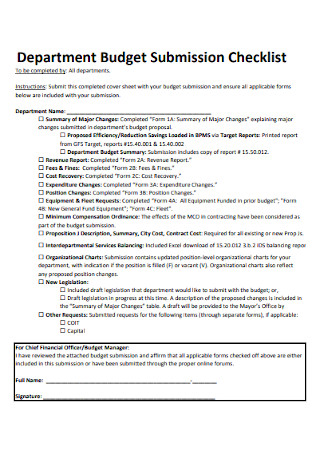
Department Budget Submission Checklist
download now -

Church Budget Preparatin Checklist
download now
What Is a Budget Checklist?
A budget checklist is a comprehensive checklist that is intended to help an individual or organization properly budget and manage their finances based on their needs and monetary goals.
According to an article by the Ascent, Americans spend an average of $610 on food each month. The same article also reported that the average single person spends $329 more each year than their take-home pay.
Financial Tips for Beginners
If you are a total newbie when it comes to finances, don’t fret. There are a number of ways you can begin your journey towards better financial health. You do not have to be an economist or financial expert to learn practical money-saving tips. In this case, the little steps are what matter and gradually building good money habits is the way to achieving financial literacy.
Examples of Budget Checklists
You can budget essentially anything that’s important to you. Whether it is for personal or professional reasons, a budget checklist can make all the difference in your financial planning and preparation. The following examples are just some common ways a budget checklist can be applied.
How to Create a Budget Checklist
To create a budget checklist, you need to establish what kind of budget you want first. If you are looking for ideas, browse the sample templates from the collection above. Choose one that meets your needs and follow the step-by-step guide below.
Step 1: Objective
The first step in making a budget checklist is to establish your objective. There can be several reasons why someone would need or want a budget checklist. If you have a specific reason, it might be a good idea to jot it down to remind yourself of the end goal. Sticking to a budget can be challenging especially if unexpected issues occur. But with a clear end goal in mind, you can plan better and anticipate problems with more confidence and clarity. In addition to being specific, you want to keep your objective brief and straightforward as well. One or a couple of lines or bullet points should do.
Step 2: Income
The next step is to identify your sources of income. A basic budget should consist of both income and expenses. In order to craft an accurate and practical budget, enumerate all revenue streams or channels. Whether active or passive income, make sure to include it in the checklist. The most common and obvious source of income is active employment. No matter how much you earn in a month, it is still important to know how to budget effectively. To avoid spending excessively or wasting your hard-earned money on needless wants, it is important to learn how to track and manage your income.
Step 3: Expenses
Along with income, expenses are a crucial part of a budget. You need to have a firm understanding of where your earnings go. What do you spend your money on? Are these expenses essential or non-essential? Which of these expenses are fixed or flexible? These are the types of questions you must ask in order to create a comprehensive budget checklist. It might also help to categorize or classify your expenses according to type or importance. Again, keep in mind that prioritization is key. Once you know what expenses you can do without or with less, then you can make the necessary adjustments and changes to your budget.
Step 4: Actual Amount and Monitoring
The work does not end with an accounting of your income and expenses. A budget checklist is a work-in-process. You must have a monitoring or tracking mechanism in place to see if you are following through with your budget. The premise being that a budget mostly entails planning and preparation; however, it does not mean that the budget plan is always followed. Sometimes, you can go over budget or underspend. Regardless, it is important to note this in your document. This is crucial so that you can compare and properly track your finances.
FAQs
How do I make a budget checklist?
To make a budget checklist, you need to have an adequate assessment or accounting of both your income and expenses. Refer to the previous section for more detailed instructions on how to create a budget checklist.
What is the 50 20 30 budget rule?
The basic rule is that 50% of your monthly income should go to needs or essential expenses; the other 30% to wants and the remaining 20% ought to be kept for savings.
What are the 5 basic elements of budgets?
According to Harvest Financial Planning, the five basic elements of a budget are income, fixed expenses, flexible expenses, unplanned expenses and savings.
If you are looking for a simple way to start taking your finances seriously, creating a budget checklist is a step in the right direction. Browse the sample templates above, select a sample checklist that suits your needs and start budgeting today!
